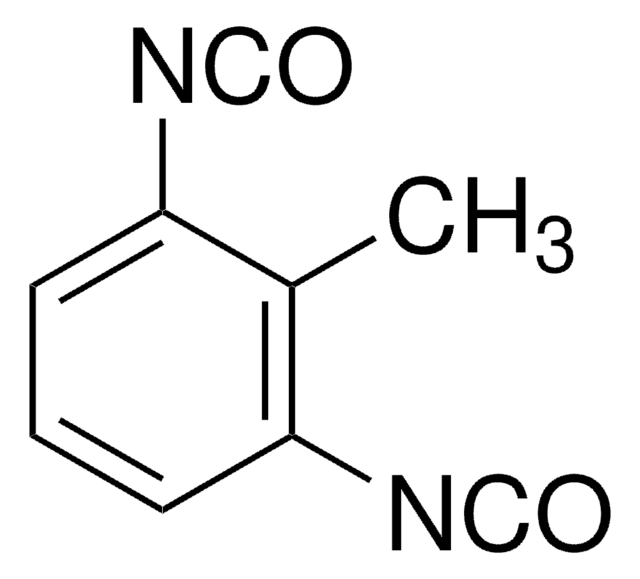256439
4,4′-Methylenebis(phenyl isocyanate)
98%
Synonym(s):
4,4′-MDI, Bis(4-isocyanatophenyl)methane
About This Item
Recommended Products
Quality Level
Assay
98%
form
solid
reaction suitability
reagent type: cross-linking reagent
bp
200 °C/5 mmHg (lit.)
mp
42-45 °C (lit.)
density
1.18 g/mL at 25 °C (lit.)
storage temp.
−20°C
SMILES string
O=C=Nc1ccc(Cc2ccc(cc2)N=C=O)cc1
InChI
1S/C15H10N2O2/c18-10-16-14-5-1-12(2-6-14)9-13-3-7-15(8-4-13)17-11-19/h1-8H,9H2
InChI key
UPMLOUAZCHDJJD-UHFFFAOYSA-N
Looking for similar products? Visit Product Comparison Guide
General description
Application
- Polyurethane cationomers, that are applicable in medical implants.
- A prepolymer for preparing self-healable polyurethane elastomers.
Signal Word
Danger
Hazard Statements
Precautionary Statements
Hazard Classifications
Acute Tox. 4 Inhalation - Carc. 2 - Eye Irrit. 2 - Resp. Sens. 1 - Skin Irrit. 2 - Skin Sens. 1 - STOT RE 2 Inhalation - STOT SE 3
Target Organs
Respiratory system
Storage Class Code
11 - Combustible Solids
WGK
WGK 1
Flash Point(F)
411.8 °F - closed cup
Flash Point(C)
211 °C - closed cup
Personal Protective Equipment
Certificates of Analysis (COA)
Search for Certificates of Analysis (COA) by entering the products Lot/Batch Number. Lot and Batch Numbers can be found on a product’s label following the words ‘Lot’ or ‘Batch’.
Already Own This Product?
Find documentation for the products that you have recently purchased in the Document Library.
Customers Also Viewed
Our team of scientists has experience in all areas of research including Life Science, Material Science, Chemical Synthesis, Chromatography, Analytical and many others.
Contact Technical Service












![Poly[(phenyl isocyanate)-co-formaldehyde] average Mn ~400](/deepweb/assets/sigmaaldrich/product/structures/319/634/60a69bae-e14c-4356-983b-a2c362dcdeec/640/60a69bae-e14c-4356-983b-a2c362dcdeec.png)